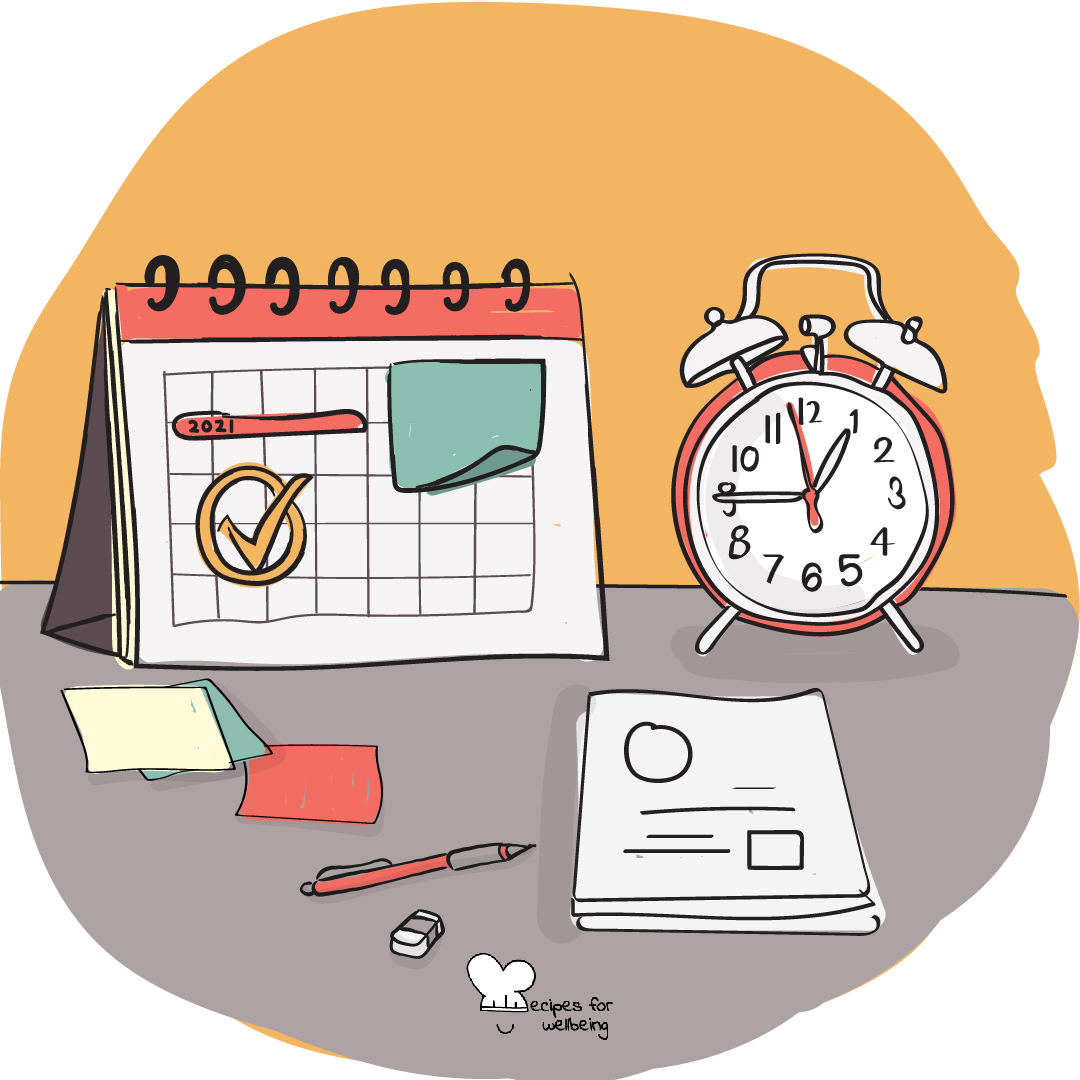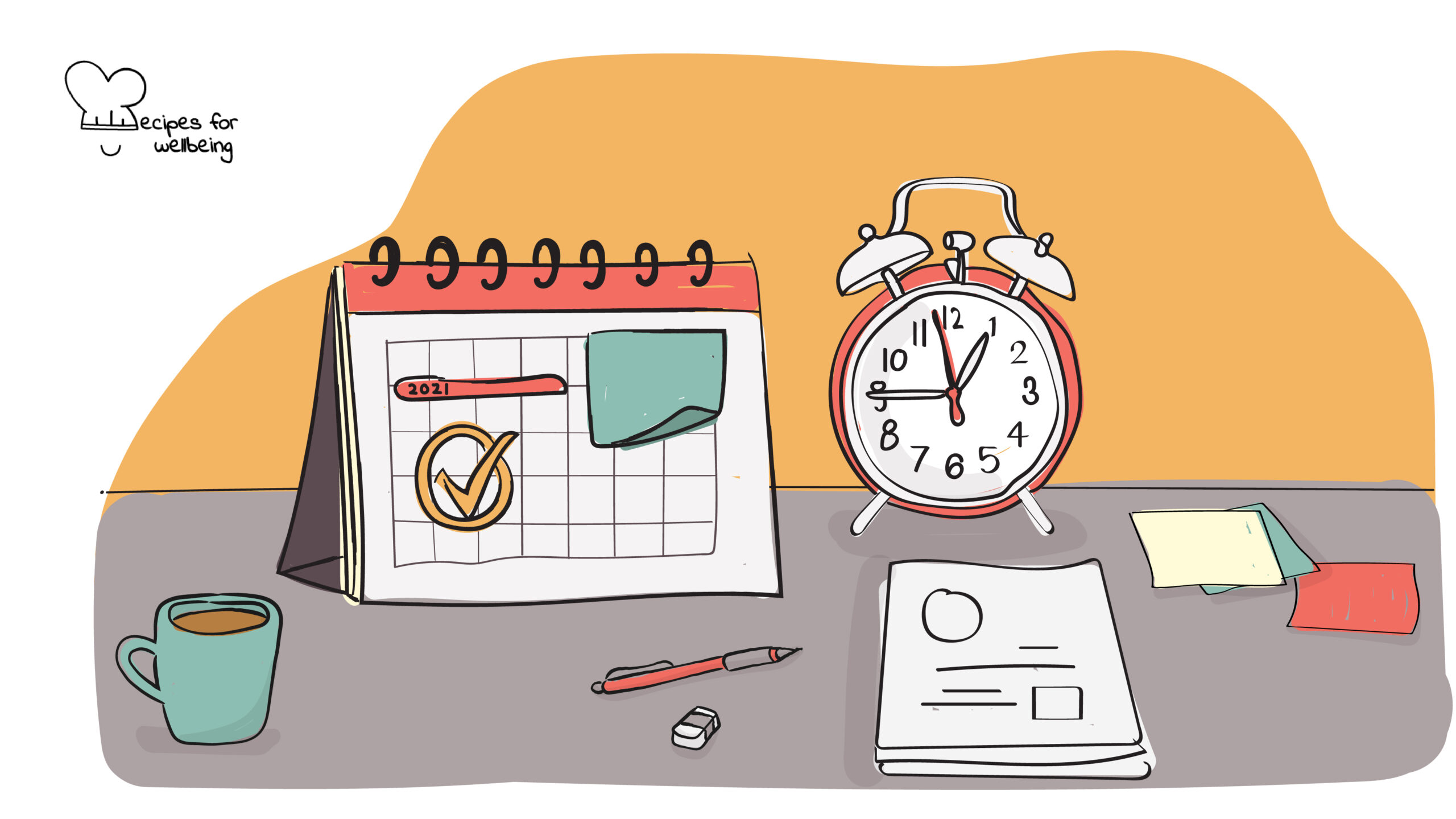
Tips for time management
What’s the ONE Thing I can do, such that by doing it everything else will be easier or unnecessary? ―Gary Keller
👥 Serves: 1 person
🎚 Difficulty: Easy
⏳ Total time: Ongoing
🥣 Ingredients: “The ONE thing” book by Gary Keller (if you’re curious to find out more about it!)
🤓 Wholebeing Domains: Accomplishments, Awareness, Meaning, Rest
💪 Wholebeing Skills: Balance, Determination, Discernment, Flow, Focus, Pausing, Presence, Time management

Tips for time management
📝 Description
Simple tips to avoid the “multitasking trap” and be happier and more productive at work.
In the book The ONE thing, author Gary Keller explains that success is a result of narrowing your concentration to one thing, and that extraordinary results are directly determined by how narrow you can make your focus. This recipe is an invitation to reflect on your relationship with time management and multitasking, and explore some of the concepts introduced in the book.
This recipe has been kindly donated by Julie Murat.
👣 Steps
Step 1 – Reflect (20’)
Start by reflecting on the big ideas presented in the book “The ONE Thing” and on your current relationship with time management. The big ideas introduced in the book are the following:
- Not everything matters equally.
- Multitasking is a lie.
- Divide maker time and social time.
1. Not everything matter equally
When everything feels urgent and important, everything seems equal. We become active and busy, but this doesn’t actually move us any closer to success. Activity is often unrelated to productivity, and busyness rarely takes care of business.
Doing the most important thing is always the most important thing. Time-block your “ONE Thing”, as early in the day as possible. Prioritisation doesn’t start with re-ordering, it starts with eliminating. If you try to execute too many ideas, you will execute none. Plan focus time. Also, learn how to say no. It can be hard if you have a “people-pleasing” personality, but it’s actually one of the easiest time-savers.
2. Multitasking is a lie
When you try to do two things at once, you either can’t or won’t do either well. It’s not that we have too little time to do all the things we need to do, it’s that we feel the need to do too many things in the time we have. Researchers estimate we lose 28% of an average workday to multitasking ineffectiveness (interruptions every 11 minutes on average).
Your own need to do other things instead of your ONE Thing may be your biggest challenge to overcome. Reflect on the reason why you’re avoiding a task (it’s often fear of failure, fear of judgement, fear of uncertainty), DON’T abandon the task if it’s your ONE Thing.
3. Divide maker time and social time
Divide all your work into two buckets: maker (do or create) and social (collaborate or oversee or direct). “Maker” time requires large blocks of the clock to write code, redact articles, develop ideas, generate leads, produce products, or execute on projects and plans. This time tends to be viewed in half-day increments. “Social time,” on the other hand, usually gets divided into hours (a team meeting, an interview with a candidate, a pitch to a potential partner, etc.).
To experience extraordinary results, identify whether you want to be a maker in the morning and a social person in the afternoon or vice versa. You could also split your week by having one entire day without any social time for instance, or try to concentrate all social times in one day. It all depends on your needs and what makes you feel happier!
Check out the recipes “Drop the to-do list guilt” and “Done list” for additional input and guidance.
Step 2 – Pause regularly (5’ multiple times a day)
Throughout your day, pause regularly to reflect upon the core question: “What’s ONE Thing I can do, such that by doing it everything else will be easier or unnecessary?” This question holds a lot of power because it helps you cut the noise and really prioritise.
For example: sometimes a hard conversation with a coworker asking for more support from them will completely unblock your week, because you actually were taking some of the tasks they were underdelivering on. So in this case, you may initially think your “ONE Thing” is finishing a report, but it was actually asking for support to finish it.
Step 3 – Avoid multitasking
Here are some tips to avoid multitasking in a digital environment:
- We can only be “in the zone” after a good focus (around 15 minutes), so you can try planning “in the zone” time in your digital calendar and show up for it, as you would with a planned meeting with people. For more info on experiencing flow, check out the recipe “Flow state”.
- Create fun little “I’m going through all those admin/repetitive things” sessions with loud music to nudge an energy peak, play against yourself.
- Try the recipe “Pomodoro® Technique for Wellbeing” to give yourself mindful breathers in your workflow.
- Turn off those Slack notifications. Trello too. Blocking everything else until you get something done is working smart.
- You can also try making yourself a “focus soundmix” with tools like https://www.noisli.com.
- Use a tab manager on your browser that helps focus such as Tabby.
- There is also a very useful option if you use gmail which is that close to the “Send” button in any email, you can instead use the option “Schedule send”. You can block times in your week to schedule some follow ups or emails you’ll need to write during the week, and forget about emails for a few days to enjoy more focus time. Example: I write most emails on Monday but schedule them to go out at different times during the week so I can forget about them. If emailing stresses you out, you can also check out the recipe “Mindful emailing”.
Share your best time management tips in the comments section below!

